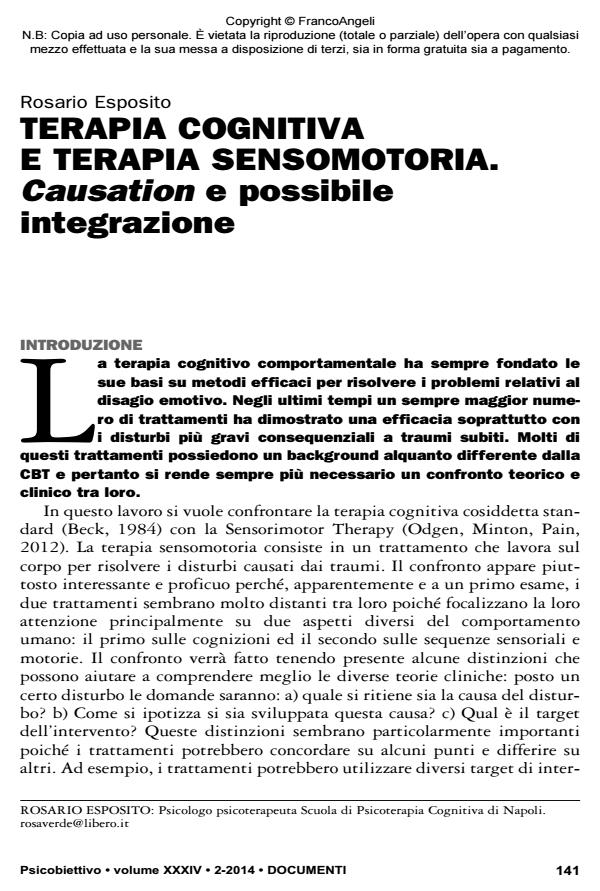Cognitive therapy and sensorimotor therapy. Causation and possible integration
Journal title PSICOBIETTIVO
Author/s Rosario Esposito
Publishing Year 2014 Issue 2014/2
Language Italian Pages 13 P. 141-153 File size 550 KB
DOI 10.3280/PSOB2014-002010
DOI is like a bar code for intellectual property: to have more infomation
click here
Below, you can see the article first page
If you want to buy this article in PDF format, you can do it, following the instructions to buy download credits

FrancoAngeli is member of Publishers International Linking Association, Inc (PILA), a not-for-profit association which run the CrossRef service enabling links to and from online scholarly content.
Cognitive therapy has always had a very open approach to different clinical models provided, that proved to be effective. More and more frequently, in the international scene the clinical approaches are emerging which, although they demonstrate some effectiveness in treatments for mental health, they also appear theoretically very far from cognitive therapy and therefore difficult for clinical integration. This article seeks to compare cognitive therapy (Beck, 1984) with sensory motor therapy (Ogden et al., 2012) taking into account three key concepts that seem useful for understanding the normal and pathological behavior: the causation, ontogeny and the target of treatment. The comparison between the two approaches, thanks to the distinction above, lead to the emerging of individual differences, but also the individuation of unexpected and useful convergences that make an integration possible, which included the development of therapeutic strategies.
Keywords: Sensory Motor Psychotherapy, Cognitive Therapy; Psychotherapy Integration; Causation in Psychotherapy; Strategies in Psychotherapy
Rosario Esposito, Terapia cognitiva e terapia sensomotoria. causation e possibile integrazione in "PSICOBIETTIVO" 2/2014, pp 141-153, DOI: 10.3280/PSOB2014-002010